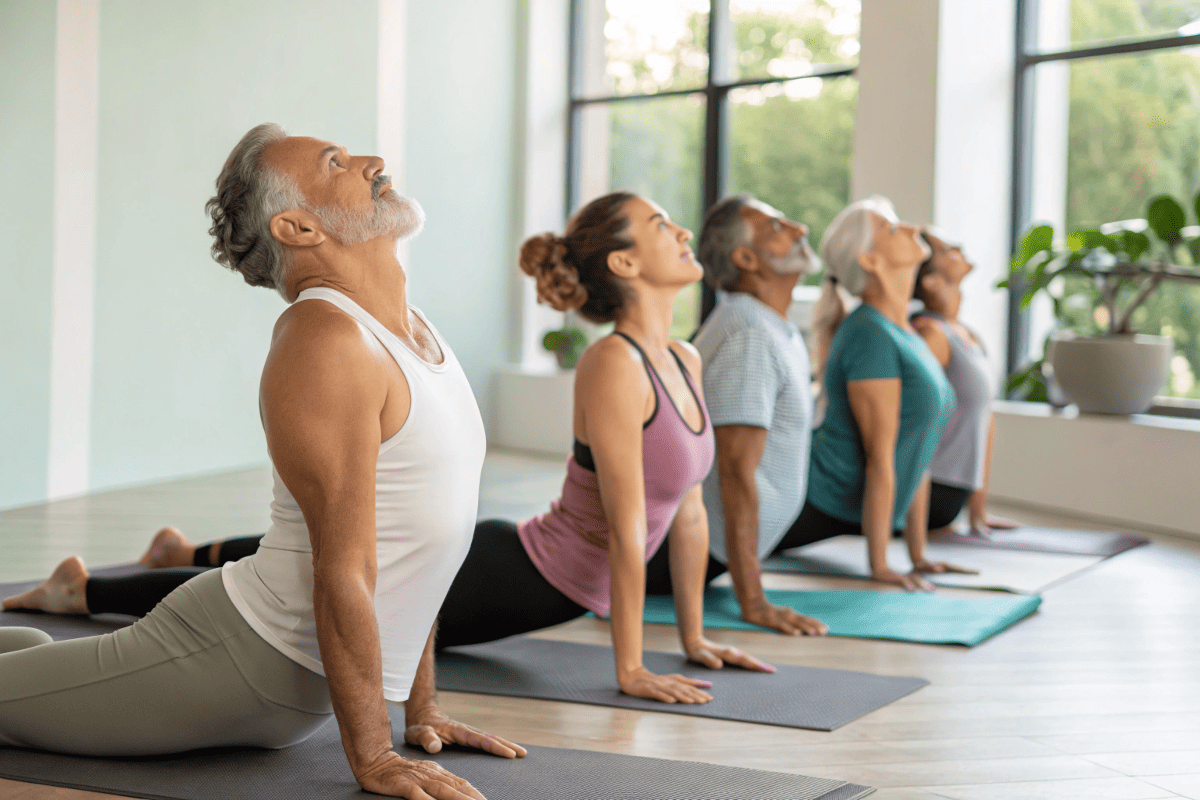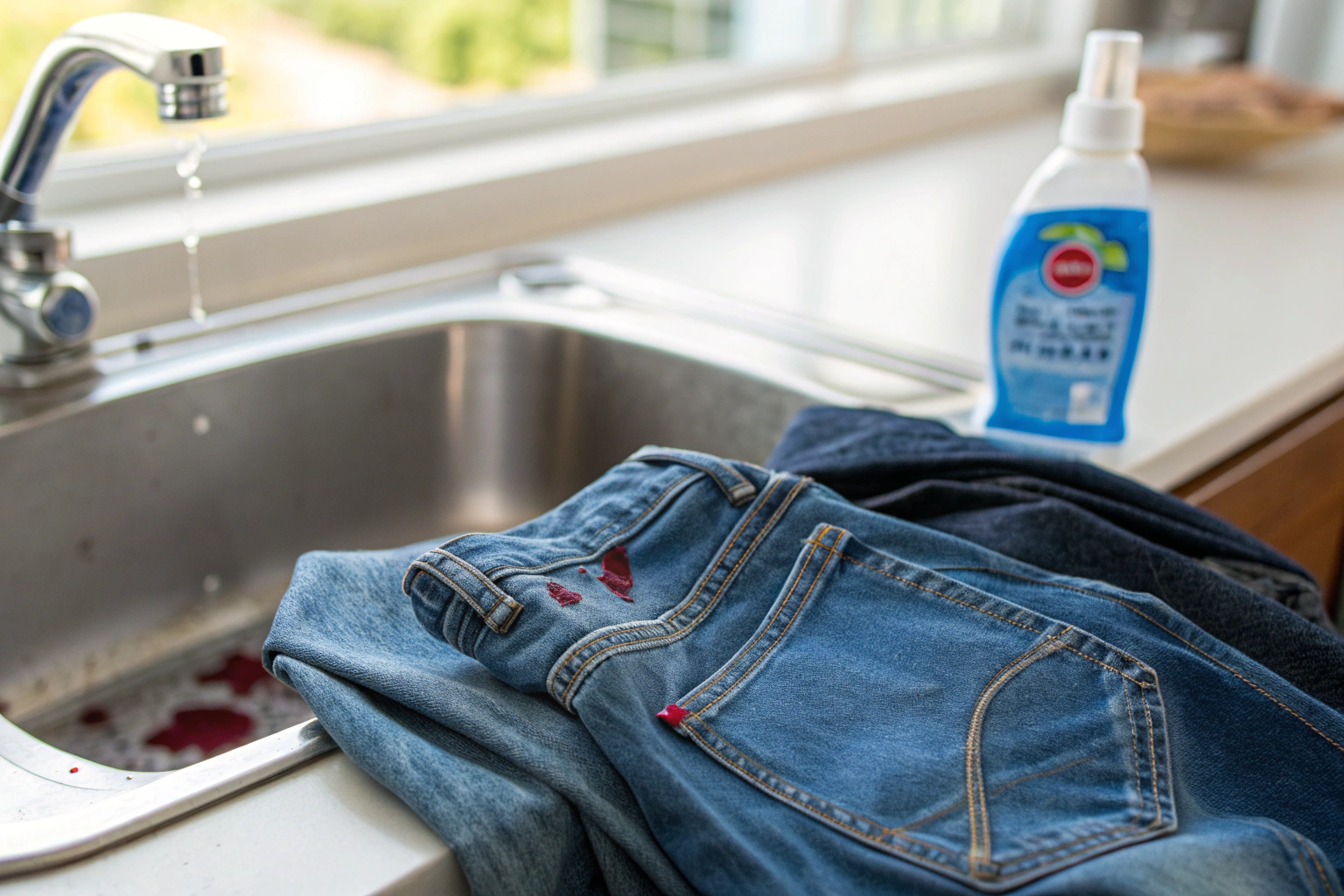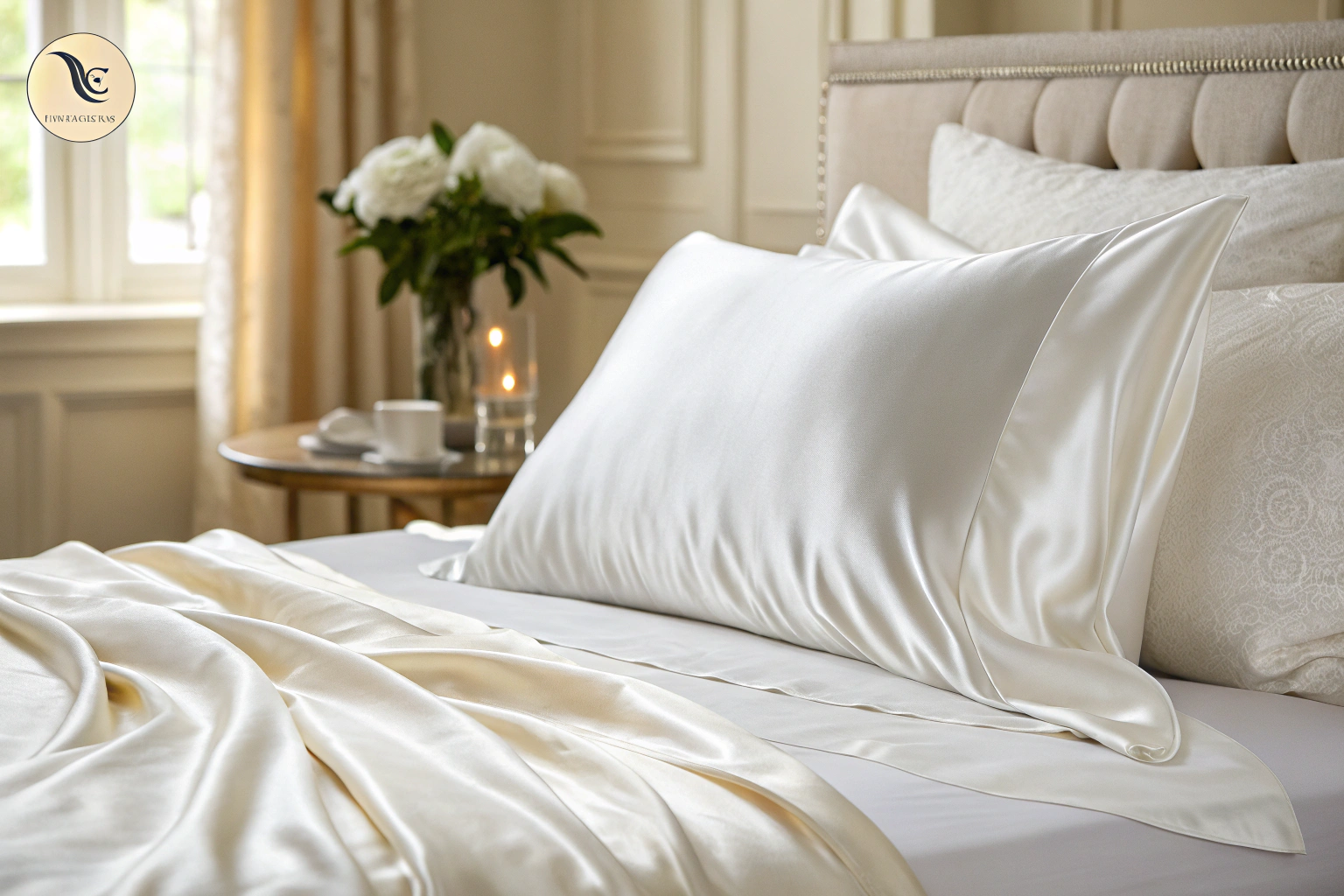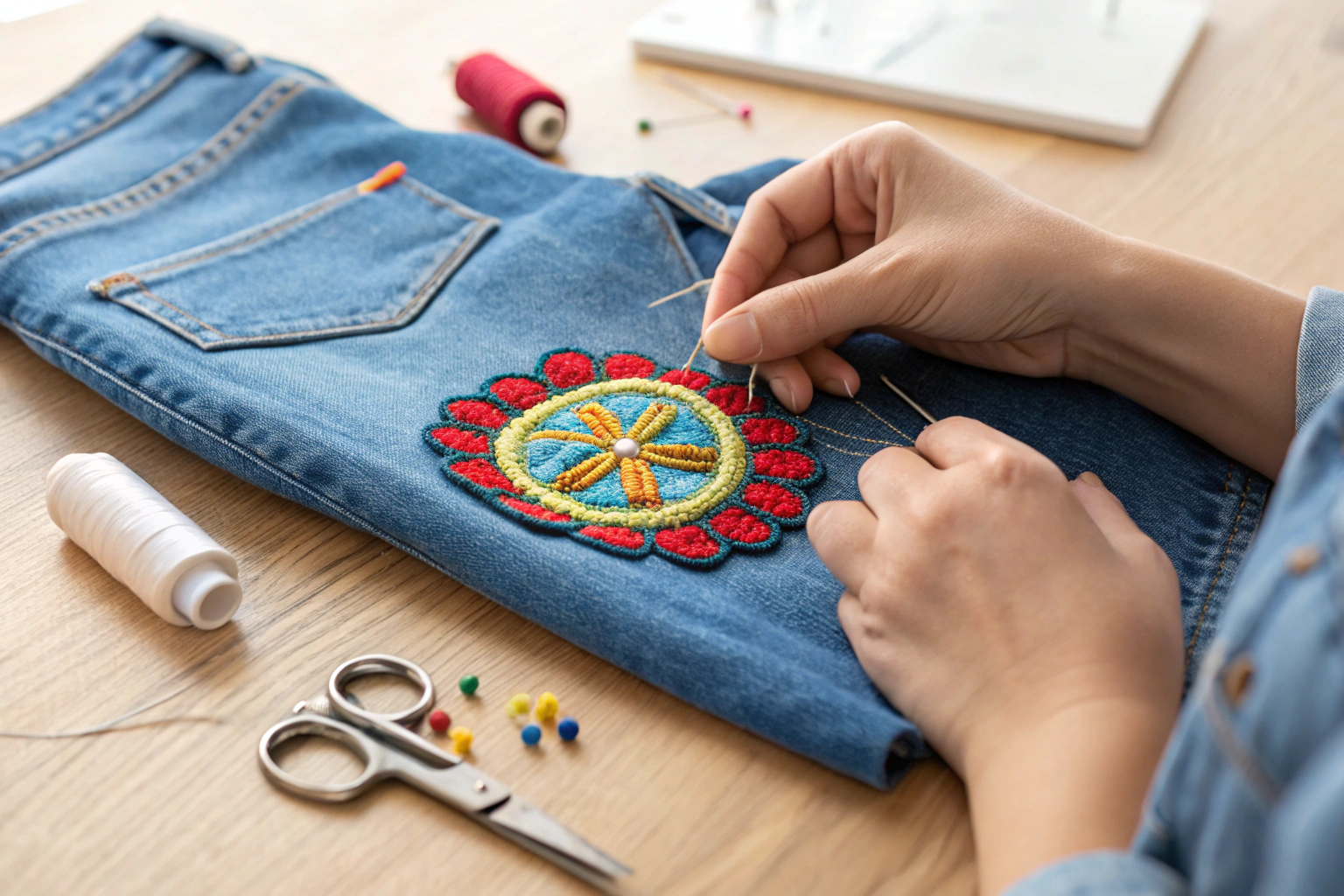Stepping onto the mat is more than a physical act — it’s a return to self. Whether you’re flowing through vinyasa, finding stillness in yin, or sweating through a hot yoga class, the right clothing becomes an extension of your practice. When your leggings slip or your top bunches mid-pose, it pulls you out of the moment. That’s why what you wear to yoga truly matters.
Understanding Why Yoga Attire Matters
Yoga clothing differs significantly from regular workout gear due to the unique demands of the practice. Unlike running or weightlifting, yoga requires clothing that moves seamlessly through complex poses, transitions, and extended holds without restricting movement or causing distractions.
How Proper Clothing Enhances Your Practice
The connection between what you wear and how well you practice runs deeper than most people realize. Proper yoga attire enhances your practice by:
- Increasing range of motion during challenging poses – allowing deeper stretches and better alignment
- Reducing distractions from constant adjustments – keeping you focused on breath and movement
- Providing appropriate support for different movements – especially during inversions and dynamic sequences
- Helping regulate body temperature during practice – preventing overheating or getting too cold
- Building confidence to try more advanced poses – when you’re not worried about wardrobe malfunctions
Finding the Right Fit for Yoga Apparel
The key to effective yoga clothing lies in finding the perfect balance between support and freedom. Your clothes should feel like a second skin—supportive enough to stay in place during inversions, yet flexible enough to allow full range of motion during deep twists and backbends.
The Importance of Material and Fabric
After years of testing different fabrics in various yoga environments, I’ve learned that material choice can make or break your practice experience. The best yoga fabrics offer four-way stretch, moisture-wicking properties, and breathability. Look for blends containing polyester, nylon, or spandex while avoiding 100% cotton, which retains moisture and loses shape when wet.
| Fabric Type | Benefits | Drawbacks | Best For |
|---|---|---|---|
| Polyester/Spandex Blend | Moisture-wicking, quick-dry, maintains shape | Can retain odors over time | Hot yoga, vigorous practices |
| Nylon/Lycra Blend | Extremely durable, smooth feel, great stretch | More expensive, can be less breathable | All practice types |
| Bamboo Blends | Naturally antimicrobial, soft, eco-friendly | Less durability, slower drying | Gentle practices, sensitive skin |
| Cotton Blends | Soft, natural feel, affordable | Retains moisture, loses shape when wet | Light practices only |
Essential Yoga Wear: Building Your Practice Wardrobe
Building a functional yoga wardrobe doesn’t require dozens of pieces. Focus on quality essentials that work across multiple practice styles. I recommend the investment pyramid approach:
Top Tier (Worth the Splurge): High-quality leggings and supportive sports bras—these are your practice foundations. Middle Tier (Moderate Investment): Versatile tops, secondary bottoms, and specialty items for different yoga styles. Base Tier (Budget-Friendly): Basic layers, accessories, and backup pieces.
Finding Your Perfect Yoga Bottoms
Your choice in yoga bottoms significantly impacts your practice comfort and confidence. After observing hundreds of students, I’ve identified key features that make certain bottoms superior for yoga practice.
| Type | Best For | Features to Look For | When to Avoid |
|---|---|---|---|
| Full-Length Leggings | Most practices, cooler environments | Four-way stretch, high waistband, squat-proof fabric | Very hot rooms where overheating is a concern |
| Capri/Cropped Leggings | Moderate temperatures, alignment-focused classes | Secure waistband, flatlock seams, stays-put design | Cold environments, extensive floor work |
| Yoga Shorts | Hot yoga, heated practices, summer outdoor classes | Built-in liner, longer inseam (5-7 inches), non-riding fabric | Cold rooms, extensive inversions, modesty concerns |
| Looser Yoga Pants | Gentle practices, meditation, restorative classes | Soft fabric, drawstring waist, comfortable fit | Inverted poses, rapid sequences, windy outdoor practice |
Before purchasing any yoga bottoms, perform the “bend test”—squat down and check for transparency. The fabric should maintain opacity even when stretched.
Selecting Supportive Tops and Sports Bras
Your upper body attire needs to provide appropriate support while allowing complete freedom of movement. Consider these factors when choosing yoga tops:
- Support level needed based on your body and practice intensity
- Coverage desired for different poses, especially inversions where tops can shift
- Fabric breathability and moisture-wicking properties for temperature regulation
- Fit around arms and shoulders to allow unrestricted movement in all directions
- Length and stay-put features to prevent riding up during inverted poses
For sports bras, choose based on your practice intensity and personal comfort. Medium-support bras work well for most yoga styles, while high-support options are better for vigorous vinyasa or power yoga classes.
Yoga Jackets, Sweaters and Layers
Temperature regulation is crucial for a comfortable practice. I always bring a lightweight layer to class, as studio temperatures can vary significantly, and your body temperature will drop during final relaxation.
Look for layers with these features:
- Easy on/off design for quick transitions
- Breathable fabric that doesn’t trap heat
- Thumb holes or fitted cuffs that stay in place
- Flattering fit that doesn’t add bulk
Yoga Footwear and Accessories
The Barefoot Question: Socks, Shoes, or Nothing?
Traditional yoga practice is done barefoot to maximize connection with the ground and prevent slipping. However, there are valid exceptions:
- Barefoot: Best for most practices, provides optimal grip and ground connection, allows natural foot movement
- Yoga socks with grips: Ideal for hygiene concerns, cold floors, or foot conditions requiring coverage
- Minimalist yoga shoes: Appropriate for outdoor practice or specific foot conditions requiring support
Essential Yoga Accessories
While not clothing, these accessories enhance your practice experience:
- High-quality yoga mat: Provides cushioning and traction for safe practice
- Yoga towel: Essential for hot yoga, helpful for extra grip in any practice
- Props: Blocks, straps, and bolsters support proper alignment and make poses accessible
Dressing for Different Types of Yoga
Your clothing needs vary significantly based on the yoga style you’re practicing. Understanding these differences ensures optimal comfort and performance.
What to Wear to Hot Yoga
Hot yoga demands specific clothing considerations due to the intense heat and humidity. Based on years of hot yoga practice, I recommend:
- Moisture-wicking, quick-dry shorts or form-fitting leggings that won’t become heavy with sweat
- Supportive, minimal sports bra or fitted tank top that stays in place when wet
- Sweat-absorbing headband to keep perspiration out of your eyes
- Face towel for pose transitions and hand grip
- Full-sized yoga towel for mat coverage to prevent slipping
- Change of dry clothes for after class to prevent post-practice chills
Appropriate Attire for Gentle and Restorative Yoga
Slower-paced practices require clothing that prioritizes comfort and warmth over performance features. Choose softer fabrics, looser fits, and consider bringing extra layers for the extended relaxation periods typical in these classes.
Common Yoga Clothing Mistakes to Avoid
Through years of teaching, I’ve observed these frequent clothing mistakes that can detract from practice effectiveness:
- Wearing see-through leggings – Always perform the bend test before purchasing
- Choosing tops that ride up in inversions – Opt for longer, more fitted styles
- Wearing cotton in hot classes – Cotton retains moisture and becomes heavy and uncomfortable
- Forgetting to remove jewelry – Jewelry can dig into skin during floor poses and cause injury
- Using heavily scented products – Strong fragrances can distract other students in close quarters
Be Mindful of Others in Class
Choose attire that respects the shared practice space. While yoga encourages self-expression, consider how your clothing choices affect the collective energy. Avoid excessively revealing outfits, distracting patterns, or anything that might make fellow practitioners uncomfortable.
Caring for Your Yoga Clothes
Proper care extends your yoga wardrobe’s lifespan and maintains performance features:
Do:
- Wash synthetic fabrics in cold water to preserve elasticity
- Air dry when possible to prevent heat damage
- Use athletic-specific detergent for persistent odors
- Wash yoga clothes promptly after sweaty practices
Don’t:
- Use fabric softeners on performance fabrics (they reduce moisture-wicking ability)
- Leave damp clothes in gym bags (promotes bacterial growth)
- Use bleach or harsh chemicals on technical fabrics
- Wash yoga clothes with rough fabrics like denim
Extending the Life of Your Yoga Wardrobe
Maximize your investment by rotating between multiple pieces, storing clothes properly, and addressing small issues before they become major problems. Quality yoga wear should last years with proper care.
Final Thoughts: Confidence Comes From Comfort
The best yoga clothes are the ones that make you forget you’re wearing anything at all. When your clothing moves with you seamlessly, supports you appropriately, and keeps you comfortable throughout practice, you can focus entirely on the breath, movement, and mindfulness that make yoga transformative.
Remember, yoga is a personal practice, and your clothing choices should reflect what makes you feel most confident and comfortable on your mat.
FAQs: Your Yoga Clothing Questions Answered
Avoid jeans, restrictive clothing, anything with zippers or buckles that dig in, and 100% cotton for heated practices.
Form-fitting isn’t mandatory, but clothes should be fitted enough to stay in place during movement and inversions.
Yes, shorts are perfectly appropriate, especially for hot yoga. Choose styles with longer inseams and secure waistbands.
Quality matters more than price. Invest in well-made basics that will last, but you don’t need designer labels to practice effectively.
Most practitioners wear form-fitting leggings or shorts with moisture-wicking tops and supportive sports bras. The key is comfort and functionality over fashion.
Choose comfortable, stretchy clothes you can move freely in. Avoid anything too loose or restrictive, and opt for breathable fabrics.
Most yoga is practiced barefoot, though grip socks are acceptable if needed for hygiene or warmth.
Yes—hot yoga requires minimal, moisture-wicking clothing, while restorative classes call for comfortable layers you can relax in.




